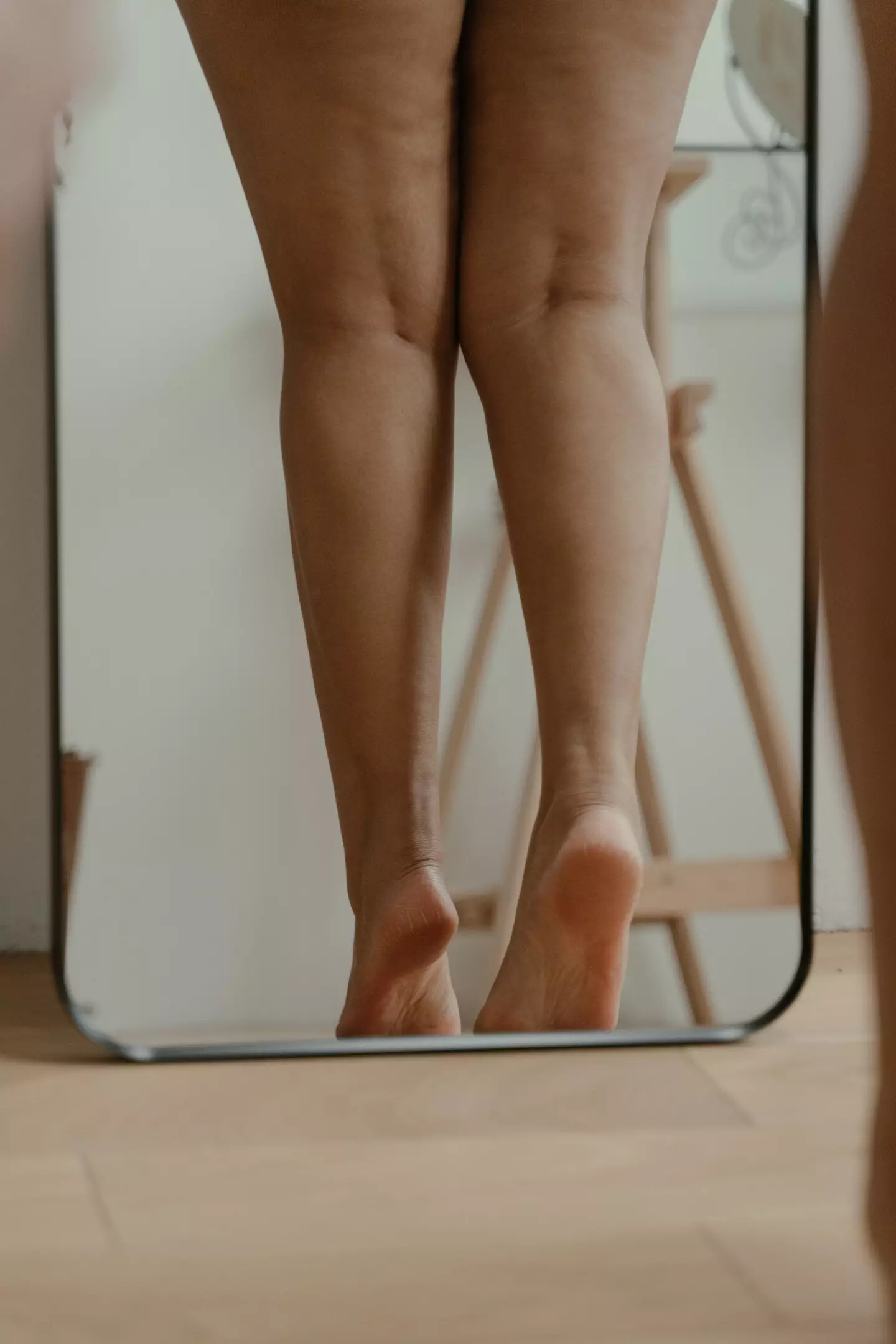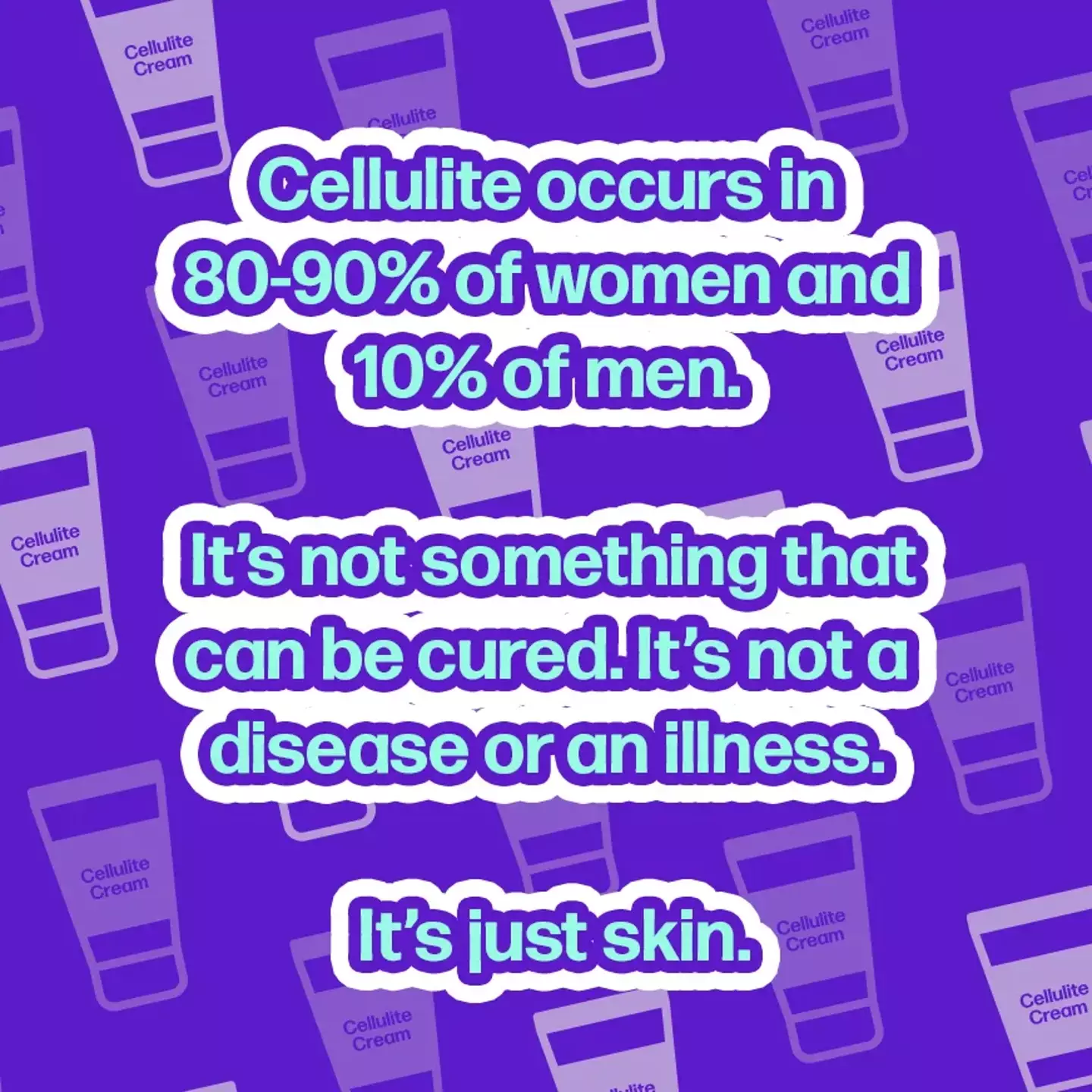
If you've ever trawled the shelves willing the skincare gods to help you find the perfect firming cream, smoothing serum or miracle cellulite antidote, you were likely disappointed to find it didn't do much else other than leave you pretty skint. Why? Because you can't cure a condition that doesn't exist.
That's right, 'cellulite' is not real.
I know what you're thinking: 'of course it's real, I've seen it with my own eyes', but until pretty recently, the term 'cellulite' didn't even exist, because, well, it didn't have to.
Advert
In fact, it's gone on to become one of the most prevalent 'invented diseases' of our lifetime, despite the fact that 80 to 90 percent of women have it.
"It is a common feature of the human body, affecting individuals of different ages, body types and genders," qualified GP and women's health expert Dr Crystal Wyllie told TYLA.
But how did we get here? Well, there's a long and problematic history to unpack, and for all this to make sense, we need to rewind to 1873, when two French men came up with a new word.
From medicine to mainstream
Back in 1873, French doctors Émile Littré and Charles-Philippe Robin were looking for a term to describe when cells or tissues were in a state of inflammation or infection.
_CIPN21609.jpeg)
They settled on 'cellulite', and it was nothing to do with fat itself.
Advert
Marking the first documented use of the word, the pair included it in the 12th edition of the Dictionnaire de Médecine, not knowing it would soon morph into something completely unrecognisable.
The beauty boom and the article that changed it all
By the 1930s, the French beauty industry was taking off and along with it came a whole host of 'specialists' popping up everywhere, blurring the lines between beauty and medicine.
But while the industry was on the up, so were women.
Advert
Increasingly, women were stepping out of the shadows and taking on higher-paid jobs in typically male-dominated industries (you can see where this is going, can't you?), and in short, were becoming more liberated and well-off.
Of course, this couldn't just go without some kind of action, which is when Dr. Debec enters the scene, and 'cellulite' officially gets dredged up and goes mainstream.

In the February 1933 edition of Votre Beauté magazine, according to Professor Rossella Ghigi, an expert researcher, Dr. Debec penned an article in which he defined cellulite as a combination of 'water, residues, toxins, fat, which form a mixture against which one is badly armed'.
Advert
No one knows why Dr Debec opted to write the article or indeed make 'cellulite' lose its true definition, especially since up until this point, cellulite wasn't considered to be a problem or to even be about fat. But what we do know is this turning point has had massive consequences for generations of women to come.
Just like the disease it was peddled as, it caught on like a nasty rash, with panicked readers writing in begging for cures, and French spas quick to advertise so-called treatments for the skin 'problem'.
It's thought that some women were even using rolling pins to try and smooth out their skin.
Interestingly, at one point cellulite moved from appearing on the thighs to the neck, which could make more sense when you realise that not only was the bob haircut in, but fashion trends spearheaded by Coco Chanel at the time meant more women were wearing sailor-style tops designed to accentuate the neck area.
Advert
Funny how cellulite has a habit of moving around like that.

It wasn't long before 'cellulite' burst out of France and trickled into other countries, and as more women entered the workforce at the turn of World War Two, more beauty standards also seemed to creep in.
And with this, came - you guessed it - more panic over cellulite.
Cellulite goes across the pond
Anyone picking up a copy of American Vogue in April 1968 would have read an article with the headline: 'Cellulite: The Fat You Could Not Lose Before'.
It detailed a young woman who was terrified she hadn't been 'diagnosed' with the 'condition' in time, but thanks to her rolling pin, 'standing correctly' and a combination of diet and exercise, she was cured. It's a miracle!
Despite the fact that a 1978 study concluded it was just an inevitable part of our bodies - going so far as to brand it an 'invented disease' - the damage was already done, and women simply couldn't stop fretting about their cellulite.
By this point, the term had well and truly immersed itself in the mainstream, and it hasn't budged since - still, the market is overflowing with so-called remedies, creams and potions claiming to treat cellulite.

But what you might not know is that The Federal Trade Commission has successfully taken legal action on several occasions against brands claiming to have made a 'cure' for it on the grounds of false or deceptive advertising.
This makes sense, because of course you can't cure something that isn't a problem in the first place.
The 90-year-old lie: what actually is 'cellulite'?
By now you're probably wondering what we've come to know as cellulite actually is.
Well, all of this attention around the 'issue' has actually changed the definition of 'cellulite' from what Littré and Robin were initially referring to.
Cellulite, as we know it now, is a physical attribute present in around 80 to 90 percent of women as well as 10 percent of men, and involves the netted fibrous tissue in the fat beneath your skin.

Occasionally the fat cells present in this part of the skin will clump together and get pushed through that net which creates the dimpling effect we all recognise.
Dr Wyllie explained: "Cellulite is caused by the interaction of fatty deposits and connective tissue in the skin. As fat cells accumulate, the fibrous bands that connect the epidermis to the underlying muscle tighten, pulling down and creating that characteristic dimpling effect."
According to Dr Wyllie, we tend to see it more on the bum and upper thighs as those areas naturally have more body fat.
She continued: "While cellulite is a common concern for many people, it is not a medical condition or a disease and does not require a 'cure' in the medical sense.
"It is a common feature of the human body, affecting individuals of different ages, body types and genders."

She pointed out that 'cellulite is not something to worry about' and is 'a normal part of the body that doesn’t pose any health risks'.
"People with cellulite needn’t feel ashamed of it or be made to feel that it’s something that needs fixing," she said.
"There's a wide range of natural variations in the human body, all of which are beautiful and healthy."
The short of it is: it's a natural occurrence that at some point down the line got manufactured into a problem for women, all while using a medical term that wasn't true to its original definition. Maybe we should rename it 'skin' instead?
Lifting the fog
Still, despite the overwhelming evidence against cellulite being a problem, if you google the word you'll be bombarded with misinformed 'causes', tips on how to get rid of it and product listicles. But the facts are there: it's not an illness that needs to be cured or a problem that needs a magic cream or massage to fix.

The idea of 'cellulite' as a skin problem or diagnosis doesn't exist because the term has been twisted, pathologised and used as ammunition to body shame women, and ultimately, get them to spend more money.
As Dr Karan Raj put it in one of his recent TikTok videos: "Cellulite isn’t real. It’s not a condition, it’s not a disease.
"Someone at some point decided to pathologise a normal and common occurrence of the human body in order to sell products.

“Cellulite is a word invented to add to the lexicon of body shaming. It’s a word that aims to embarrass a person. A word that spawned a fraudulent billion-dollar industry,"
Our skin does dimple - that's very real - but it's normal and not going anywhere. There is no difference between a so-called 'cellulite' cell and a normal fat cell.
It doesn't need its own name, it's just skin.
Like so many other things that have been debunked over the years, I think it's time we finally open our eyes to the cellulite myth.
It'll save us our money and sanity, after all.
Featured Image Credit: Featured Image Credit: Dmytro Zinkevych / Alamy Stock Photo / Pexels